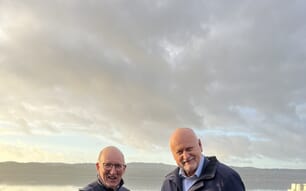The collaborative research and development initiatives will focus on a number of areas key to the sector’s growth – ranging from enhancing fish health and welfare to environmental monitoring – and the investment comes from industry, academia and the Scottish Aquaculture Innovation Centre (SAIC).
Scotland’s aquaculture sector is working to sustainably double its economic contribution from £1.8 billion in 2016 to £3.6 billion by 2030 – an aim outlined in its Aquaculture Growth to 2030 strategy. Innovation has been highlighted as playing a particularly important role in helping to meet the increasing global demand for farmed fish and shellfish.
Projects selected for the funding round will explore new methods for sea lice control, managing gill health and environmental impact modelling, among other areas. They relate to a variety of species, including salmon, trout, wrasse and shellfish.
The newly-funded projects are expected to commence in 2021 and will last between five months and three years, combining expertise from some of the sector’s best-known businesses and leading academic researchers. Proposals were assessed by SAIC’s Independent Scientific Panel (SISP) against a range of criteria, including their long-term commercial impacts and opportunities for sharing knowledge and applying outcomes across the entire sector.
Heather Jones, CEO of SAIC, said: “The aquaculture sector is well placed to help meet the growing demand for high-quality protein, and innovation continues to play a crucial role in expanding the sector’s capacity and unlocking new opportunities. Scotland can be at the forefront of new initiatives and developments in technology that will help the sector to grow sustainably.
“The results from our previous collaborative research projects – including the development of new tools, new jobs, and even new businesses – are great examples of what can be achieved when industry and academia work together. Finding answers to some of the sector’s most pressing challenges has seldom been more important, particularly in the wake of Covid-19.
“Our consortium represents the entire aquaculture sector supply chain which is reflected in the variety and scope of these latest projects. They have the potential to deliver valuable outcomes that could make a real difference to the future of the sector.”



